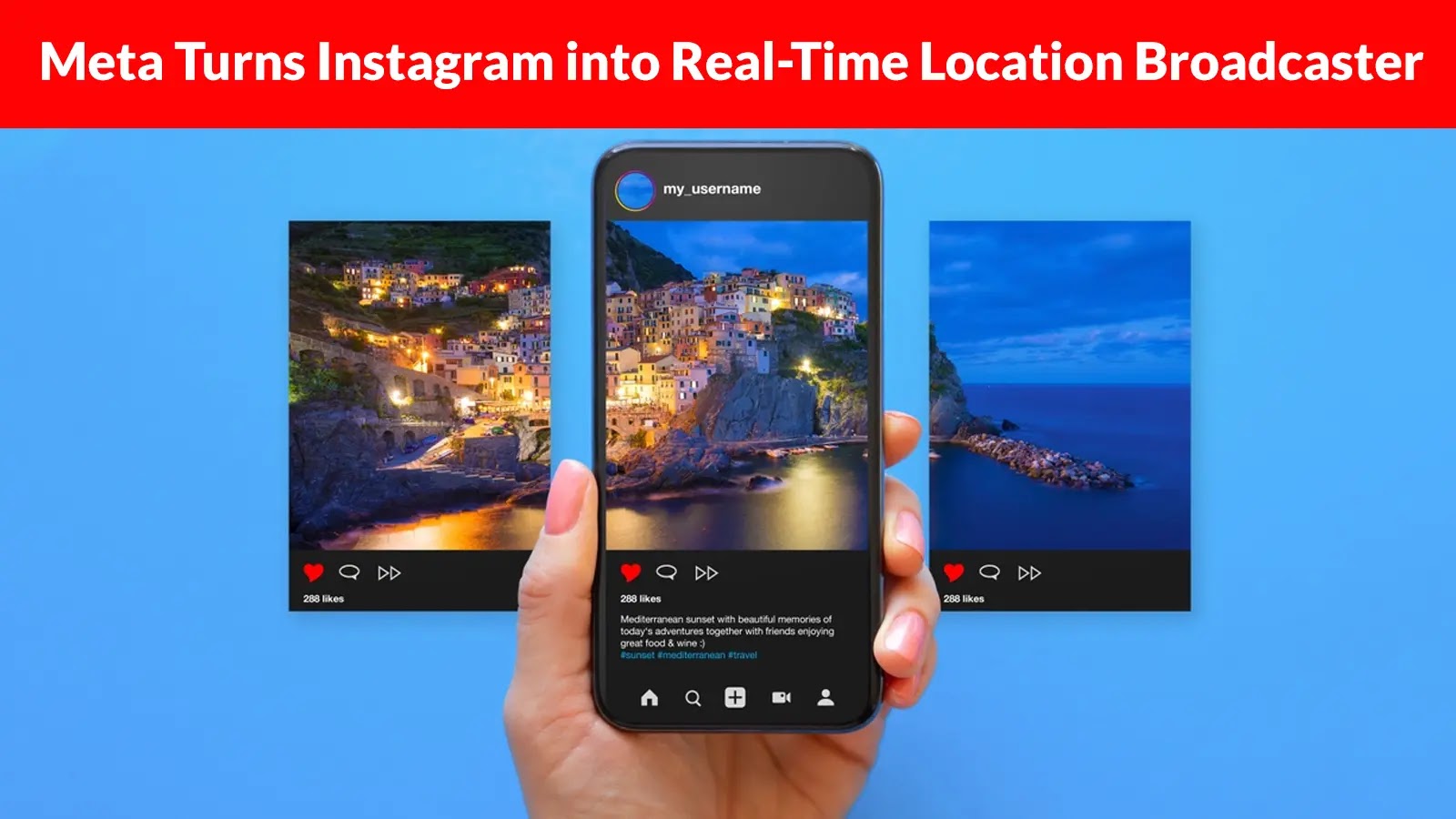
Meta’s New Feature Transforms Instagram to a New Real-Time Location Broadcaster
Meta’s Instagram: A New Real-Time Location Broadcasting System and Its Implications
The landscape of social media is continually evolving, driven by innovations that push the boundaries of digital interaction. Recently, Meta introduced a significant architectural shift within Instagram, transforming it from a mere photo-sharing application into a comprehensive real-time location broadcasting system. This new “Map” functionality fundamentally alters how users share their whereabouts, enabling continuous transmission of location data to selected contacts upon application launch. This development, while promising enhanced connectivity, necessitates a deep dive into its cybersecurity implications, privacy considerations, and the new threat vectors it introduces for both individual users and enterprises.
Understanding Instagram’s New “Map” Feature
Meta’s latest Instagram feature, the “Map,” represents a departure from traditional, static location tagging. Unlike conventional posting mechanisms where location is appended to a specific image or video, this new functionality operates as a continuous stream. When a user launches the Instagram application, their live location can be broadcast to pre-selected contacts. This signifies a fundamental change in data sharing, moving from discrete, user-initiated location broadcasts to a potentially persistent, background-driven mechanism. The implications are profound, shifting the platform’s utility towards real-time presence sharing rather than just retrospective content sharing.
Security and Privacy Implications of Real-Time Location Broadcasting
The introduction of continuous real-time location broadcasting brings a host of security and privacy concerns. While Meta emphasizes user control through selected contacts, the mere existence of such a persistent data stream opens new avenues for exploitation and unintended data exposure. Potential concerns include:
- Increased Surveillance Risk: The continuous nature of the data transmission could be exploited by malicious actors to track individuals’ movements over time, creating detailed profiles of their habits, commuting patterns, and home/work locations.
- Data Granularity and Retention: The level of granularity with which location data is collected and how long it is retained by Meta becomes a critical privacy question. Even if data is shared with selected contacts, the backend retention policies and potential for data aggregation are significant.
- Accidental Exposure: Users may not fully grasp the implications of continuous sharing, leading to accidental broadcasting of their location to a wider audience than intended or over longer durations.
- Phishing and Social Engineering: Real-time location data can be weaponized in sophisticated phishing and social engineering attacks, allowing attackers to tailor their approaches with highly accurate contextual information.
- Enterprise Security Risks: For employees using Instagram, real-time location broadcasting could inadvertently expose sensitive business locations, employee movements, or even factory layouts to unauthorized parties, posing a significant risk to intellectual property and physical security.
Attack Vectors and Threat Scenarios
The new “Map” feature introduces several potential attack vectors that cybersecurity professionals must consider:
- Location Data Interception: While typically secured via HTTPS, any vulnerability in data transmission or in Meta’s servers could expose real-time location data.
- Account Compromise Leading to Stalking: If an Instagram account is compromised (e.g., via CVE-2023-38019, a hypothetical example for demonstration purposes of a common vulnerability that exposes user data), the attacker gains immediate access to the user’s real-time whereabouts, enabling stalking or physical threats.
- Malware and Spyware Integration: Malicious applications that gain access to Instagram’s permissions could potentially “piggyback” on the location broadcasting feature, exfiltrating data directly from the device.
- Insider Threats: Even trusted contacts with access to a user’s real-time location data could potentially misuse this information, creating an insider threat scenario.
- Exaggerated Data Collection beyond User Expectations: While not a direct attack, the possibility of Meta collecting more granular or frequent location data than users anticipate for targeted advertising or other purposes poses a privacy threat.
Remediation Actions and Best Practices
Given the transformative nature of this feature, individuals and organizations must adopt proactive measures to mitigate potential risks:
- For Individual Users:
- Review Privacy Settings Regularly: Actively inspect and understand Instagram’s location sharing settings. Ensure that the “Map” feature is configured only for truly trusted contacts, or disabled entirely if not needed.
- Limit Location Access: Restrict Instagram’s access to location services on your device to “While Using App” or “Never” if continuous broadcasting is not desired.
- Understand the Scope: Be aware that launching the app could broadcast your location. Close the app completely when you do not wish to share your whereabouts.
- Strong Authentication: Enable two-factor authentication (2FA) on your Instagram account to prevent unauthorized access, which could then expose your location.
- Be Wary of Permissions: Scrutinize all app permission requests, especially those related to location.
- For Organizations and Enterprises:
- Employee Awareness Training: Educate employees about the risks associated with real-time location sharing on personal and work devices. Emphasize not sharing sensitive location data if using personal devices for work-related tasks.
- Mobile Device Management (MDM): Implement MDM solutions to enforce location privacy policies on company-owned devices and manage app permissions.
- Geofencing Policies: Consider implementing geofencing solutions for sensitive areas to alert or restrict device usage if employees inadvertently broadcast their location from secure zones.
- Data Loss Prevention (DLP): Review DLP strategies to account for the exfiltration of sensitive location data, particularly if employees are using personal devices that might contain work-related information.
- Incident Response Planning: Update incident response plans to address scenarios involving unauthorized location data exposure or tracking of employees.
Conclusion
Meta’s new “Map” feature on Instagram marks a significant evolution in social media, shifting from static content sharing to dynamic, real-time location broadcasting. While designed to enhance connectivity, this innovation introduces a complex layer of cybersecurity and privacy considerations. The ability to continuously transmit one’s whereabouts necessitates a heightened awareness from users and a robust defensive posture from organizations. Implementing stringent privacy controls, fostering user education, and continuously adapting security strategies are paramount to navigating the implications of this new era of real-time digital presence.





